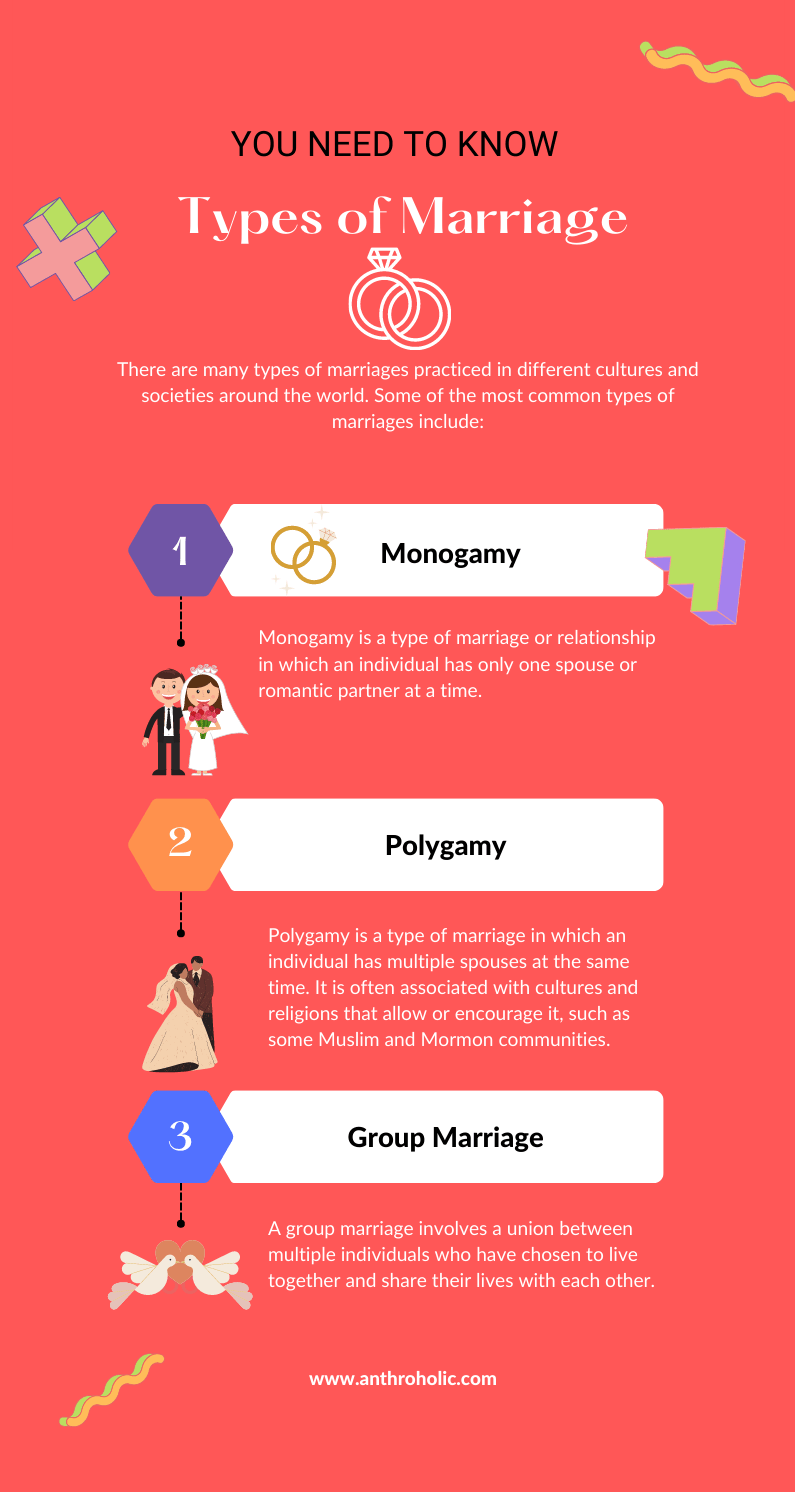AI Answer Evaluation Platform Live Now. Try Free Answer Evaluation Now
Types of Marriage
What is a Marriage?
Marriage is a legally recognized and binding union between two individuals, typically involving a public or private ceremony, in which they make a commitment to share their lives and to support each other emotionally, financially, and socially. The precise definition of marriage can vary depending on cultural, religious, and legal contexts.

Types of Marriage
There are many types of marriages practiced in different cultures and societies around the world. Some of the most common types of marriages include:
Monogamy
Monogamy is a type of marriage or relationship in which an individual has only one spouse or romantic partner at a time. In monogamous relationships, the individuals involved agree to be sexually and romantically exclusive with each other. This means that they do not engage in intimate relationships with anyone else while in the relationship. Monogamy is often seen as a symbol of commitment, loyalty, and trust between partners.
While monogamy is the norm in many cultures, it is not the only type of relationship that exists. Some individuals may choose to engage in polygamous relationships, open relationships, or other forms of non-monogamous relationships. Overall, the choice of whether to engage in monogamous or non-monogamous relationships is a personal one, and can vary depending on individual beliefs, values, and preferences.
Serial Monogamy
Serial monogamy is a form of monogamous relationship in which an individual has a series of monogamous partners over time, rather than multiple partners simultaneously. The individual may enter into a new monogamous relationship after the end of the previous one. Serial monogamy is a common relationship pattern in many cultures and societies, and is often seen as a socially acceptable way to pursue long-term relationships with different partners over time.
Straight Monogamy
Straight monogamy is a type of monogamous relationship in which two individuals of different genders (i.e., a man and a woman) are exclusively committed to each other. It is the most common type of monogamy in many cultures and societies, and is often seen as the normative relationship model. In straight monogamous relationships, the partners may share responsibilities related to marriage, family, and household.
Polygamy
Polygamy is a type of marriage in which an individual has multiple spouses at the same time. It is often associated with cultures and religions that allow or encourage it, such as some Muslim and Mormon communities. There are two main types of Polygamy:
Polygyny
This involves one man having multiple wives. It is the most common form of polygamy and is practiced in many cultures and societies around the world.
- Sororal Polygyny: Sororal polygyny is a subtype of polygyny in which a man marries multiple sisters. This practice is often found in cultures and societies where kinship ties and family relationships are highly valued.
- Non Sororal Polygyny: Non-sororal polygyny is a form of polygyny in which a man marries multiple women who are not sisters. This practice is found in many cultures and societies around the world, particularly in parts of Africa, the Middle East, and Southeast Asia.
Polyandry
Polyandry is a type of marriage in which one woman is married to multiple men at the same time. It is much less common than polygyny and is practiced in only a few cultures and societies around the world, particularly in parts of Tibet, Nepal, and India.
- Fraternal Polyandry: Fraternal polyandry is a subtype of polyandry in which a woman is married to multiple brothers at the same time. It is practiced in some parts of Tibet and Nepal, and is often seen as a way to preserve family property and resources. The brothers may share the responsibilities of marriage and family, and may have equal rights and status within the marriage.
- Non Fraternal Polyandry: Non-fraternal polyandry is a type of polyandry in which a woman is married to multiple men who are not brothers. It is much less common than fraternal polyandry and is practiced in a few societies, particularly in parts of India. The men may or may not have a relationship with each other, and may share the responsibilities of marriage and family. Non-fraternal polyandry is often seen as a way to limit population growth and ensure the economic stability of the family unit.
Other Types of Marriage
Arranged Marriage: An arranged marriage is one in which the parents or family members of the individuals involved choose their partners.
Love Marriage: A love marriage is one in which the individuals involved choose their partners based on their own feelings and mutual consent.
Interfaith Marriage: An interfaith marriage involves a union between individuals belonging to different religious backgrounds.
Same-sex Marriage: Same-sex marriage involves a union between individuals of the same gender.
Common-law Marriage: A common-law marriage is a union between individuals who have lived together for a certain period of time and are considered to be married even though they have not gone through a formal ceremony.
Group Marriage: A group marriage involves a union between multiple individuals who have chosen to live together and share their lives with each other.




